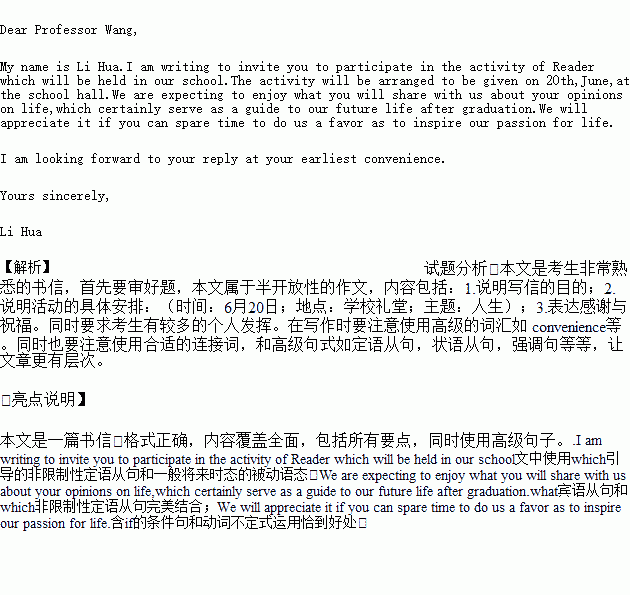题目内容
假设你是李华。最近中央电视台的《朗读者》非常流行,你校打算邀请Professor Wang来学校参加你们学校举办的《朗读者》活动,请你给Professor Wang写一封邀请信。
内容包括:
1.说明写信的目的;
2.说明活动的具体安排:(时间:6月20日;地点:学校礼堂;主题:人生);
3.表达感谢与祝福。
注意:
1.词数100左右;
2.可适当增加细节,以使行文连贯;
3.开头和结尾已写好。
Dear Professor Wang,
____________________________________________________________________________________________
____________________________________________________________________________________________
____________________________________________________________________________________________
____________________________________________________________________________________________
____________________________________________________________________________________________
______________________________________________________________________
Yours sincerely,
Li Hua

